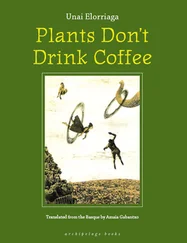Physiology of Salt Stress in Plants
Здесь есть возможность читать онлайн «Physiology of Salt Stress in Plants» — ознакомительный отрывок электронной книги совершенно бесплатно, а после прочтения отрывка купить полную версию. В некоторых случаях можно слушать аудио, скачать через торрент в формате fb2 и присутствует краткое содержание. Жанр: unrecognised, на английском языке. Описание произведения, (предисловие) а так же отзывы посетителей доступны на портале библиотеки ЛибКат.
- Название:Physiology of Salt Stress in Plants
- Автор:
- Жанр:
- Год:неизвестен
- ISBN:нет данных
- Рейтинг книги:4 / 5. Голосов: 1
-
Избранное:Добавить в избранное
- Отзывы:
-
Ваша оценка:
- 80
- 1
- 2
- 3
- 4
- 5
Physiology of Salt Stress in Plants: краткое содержание, описание и аннотация
Предлагаем к чтению аннотацию, описание, краткое содержание или предисловие (зависит от того, что написал сам автор книги «Physiology of Salt Stress in Plants»). Если вы не нашли необходимую информацию о книге — напишите в комментариях, мы постараемся отыскать её.
Discover how soil salinity affects plants and other organisms and the techniques used to remedy the issue Physiology of Salt Stress in Plants,
Physiology of Salt Stress in Plants
Physiology of Salt Stress in Plants
Physiology of Salt Stress in Plants — читать онлайн ознакомительный отрывок
Ниже представлен текст книги, разбитый по страницам. Система сохранения места последней прочитанной страницы, позволяет с удобством читать онлайн бесплатно книгу «Physiology of Salt Stress in Plants», без необходимости каждый раз заново искать на чём Вы остановились. Поставьте закладку, и сможете в любой момент перейти на страницу, на которой закончили чтение.
Интервал:
Закладка:
2.3 Effect of Salt Stress on Target and Nontarget Plants and Microorganisms
The adoption of agricultural practices leads to the colonization of humans. For agriculture, domestication of crop plants began a million years ago, and after that, the crops were selected for numerous beneficial traits. The selection continued along with the development of civilization and till the recent. During the selection process, the plant species with the higher yield and less fruit dehiscent property became target species for the selection and agriculture. In comparison, several nontarget plant species with better stress tolerance but less yield were ignored or not prioritized. Their further improvement for the better yield through conventional breeding approaches narrowed down the plant genetic diversity. Approximately, 30 plant species fulfill 90% of the total food demand of the world human population, but they are highly sensitive to salt stress (Zörb et al. 2019). The horticultural crops, vegetables, or fruits are a nutritious source of minerals, carotenoids, vitamins, and fiber in the human diet and are more sensitive to salt stress than the cereals. The salt‐stress threshold level for the metabolic homeostasis in most horticultural crops is ≤2.5 dS/m (SNAPP et al. 1991). Among the cereal crops, the effect of salinity varies depending on the cultivars’ salt‐tolerance ability. Rice and barley are both the targeted cereal crops used in agriculture for food production but affected differently by salt stress. The rice is the most sensitive to salt stress, whereas the barley is the most tolerant of salt stress among all the cereal crops used for agriculture (Munns and Tester 2008). The salt tolerance ability among the different targeted dicot crop species varies greatly. For example, some legumes are very sensitive to the salt‐stress conditions among the legume species. In contrast, the Medicago is tolerant of the salt stress up to the level of salinity equivalent to the seawater (Munns and Tester 2008).
Recent advances in the field of salinity stress tolerance and research identified close relative of the crop species, which were never targeted for agriculture but are halophytes and survive the salt stress more efficiently. The halophyte Eutrema salsugineum belongs to the same family as the horticultural crop cabbage or the oilseed crop mustard, and the model plant A. thaliana . Under 100 mM of NaCl salt stress which is deleterious for cabbage (Pavlovic et al. 2019) and A. thaliana , the E. salsugineum not only survived but completed its life cycle with a negligible effect on their growth (Kant et al. 2006). The close relative of the wheat, the wheatgrass ( Thinopyrum ponticum , syn. Agropyronelongatum ) is one of the most salt‐tolerant monocotyledonous plants (Munns and Tester 2008), which can complete its life cycle at the soil salinity equivalent to the seawater salinity. Few halophytic nontarget plant species grow like weeds in the saltmarshes and have their ability to grow and complete the life cycle in the highly saline soil (Flowers and Colmer 2008; van Zelm et al. 2020).
The soil microbial community is an indispensable component of the soil nutrient cycling and supports crop plants growth and immunity. The microbial community helps plants absorb nutrients by participating in chemical modification of mineral, which becomes suitable for the plants’ easy absorption, increasing the soil porosity and organic matter, and soil aggregation (Xu et al. 2016; Zhang et al. 2019). Importance of rhizospheric microbial communities in plant nutrient availability and health suggests that any impact of the soil microbial community diversity or structure would directly affect the crop productivity in those soils. The incident of salt stress in soil has exhibited a reduction in the rhizosphere respiration, enzyme activity, soil microbial community size, and their growth rate, which ultimately affects the biogeochemical cycle negatively (Tripathi et al. 2006; Zhang et al. 2019). The increasing soil salinity has negatively impacted the bacterial community of Planctomyces and Archangium , associated with the soil organic matter input and stabilization (Zhang et al. 2019). The fungal mycorrhizal community helps plant better absorption of the mineral from the soil, and the activity of these mycorrhiza communities affects the soil nutrient availability (Babu and Reddy 2011). Under salt‐stress conditions, the arbuscular mycorrhizae Glomus was suggested to enhance the phosphorus and potassium uptakes by the plants (Porcel et al. 2012), but the increasing salt stress reduces the Glomus availability in the soil (Zhang et al. 2019). The fungus Hydropisphaera, which is involved in degrading the lignin in the salt marsh, brings a negative impact on the plants’ growth and survival during the salt‐stress conditions. In salt stress, the Hydropisphaera got dominated by the rhizosphere. Degradation of the lignin by Hydropisphaera reduces the soil organic matter and soil fertility (Zhang et al. 2019) posing a threat to the survival of the plants under the salt‐stress conditions. The salt stress to the horticultural crop tomato showed the increased incidence of growth of the root‐rot disease‐causing fungal pathogen Phytophthora parasitica (SNAPP et al. 1991), showing the importance of understanding the effect of salt stress on the nontargeted organism in parallel. There are several beneficial halotolerant plant growth‐promoting rhizobacteria (PGPR) that assist plants in their survival under the salt‐stress conditions. The PGPRs and their functional role are described in detail by Kumari et al. (2019), and studying these PGPRs will help us improve the salt‐stress tolerance in plants up to some extent.
2.4 Effect of Salt Stress on Physiology of Crop Plants
Accumulation of salt ions in the plant rhizosphere causes dual stress to the plants, the osmotic imbalance between the soil and root cells, and cellular ionic imbalance due to passive or active intake of salt ions. The salinity‐induced osmotic stress suppresses the water uptake by the plants immediately, which then triggers various physiological and metabolic adjustments in the plants. Osmotic stress inhibits the expansion of the root and shoot cells within minutes due to reduced turgor pressure (Fricke et al. 2004; Munns et al. 2000) and the stress signal transduced rapidly at a speed of the sound through different signaling cascades from the root to the shoot tissue for the closure of stomata to minimize water loss, which seizes shoot metabolism (Christmann et al. 2013; Shabala et al. 2016). The mechanosensitive ion channels of the leaf guard cells sense the drop in xylem pressure and participate in stomatal closure, reducing the CO 2exchange and photosynthetic assimilation (Shabala et al. 2016). For osmotic adjustment, plants start the intake of the salt ions from the soil, which then enters different root and shoot cells creating the ionic stress to plants (Shabala and Lew 2002).
The NaCl dominates the saline soil, and, therefore, the Na +is the most critical ion, which is assumed to pose toxic effects on the plant cell physiology and metabolism. For their survival and optimal physiological activity, the ionic homeostasis is essential in the plants, and different ion channels and transporters in root or shoot tissues are involved in this process. The Na +enters into the root cells through the glutamate receptor‐like (GLRs) channels, cyclic nucleotide‐gated (CNGCs) nonselective cation channels, high‐affinity K +transporters (HKT2, HAK5), Shaker‐type K +channels (AKT1), the low‐affinity cation transporter (LCT1), and aquaporins (PIP2;1) (Zhao et al. 2020). The entry of salt ions to the root cells and the osmotic stress spikes the Ca 2+in the root cells activating the salt overly sensitive (SOS) signaling pathway for the extrusion of the excess Na +out of the cell (Hong et al. 2019; Shi et al. 2002). The function of active Na +extrusion from root cells to the soil is performed by the plasma membrane Na +/H +antiporter named salt overly sensitive 1 (SOS1) antiporter (Shi et al. 2002).
Читать дальшеИнтервал:
Закладка:
Похожие книги на «Physiology of Salt Stress in Plants»
Представляем Вашему вниманию похожие книги на «Physiology of Salt Stress in Plants» списком для выбора. Мы отобрали схожую по названию и смыслу литературу в надежде предоставить читателям больше вариантов отыскать новые, интересные, ещё непрочитанные произведения.
Обсуждение, отзывы о книге «Physiology of Salt Stress in Plants» и просто собственные мнения читателей. Оставьте ваши комментарии, напишите, что Вы думаете о произведении, его смысле или главных героях. Укажите что конкретно понравилось, а что нет, и почему Вы так считаете.












